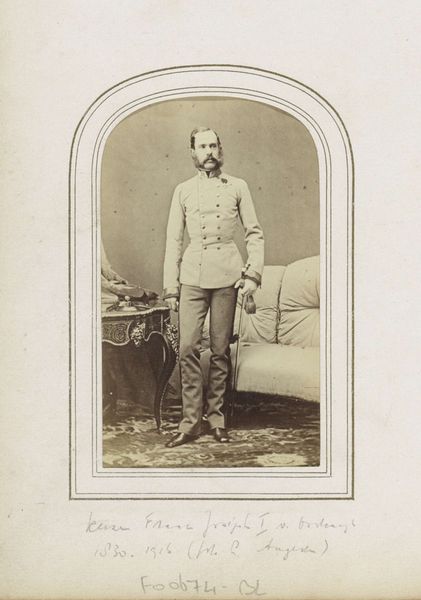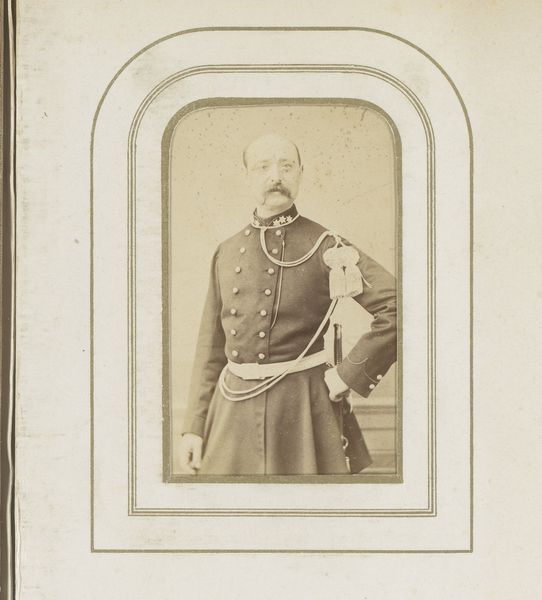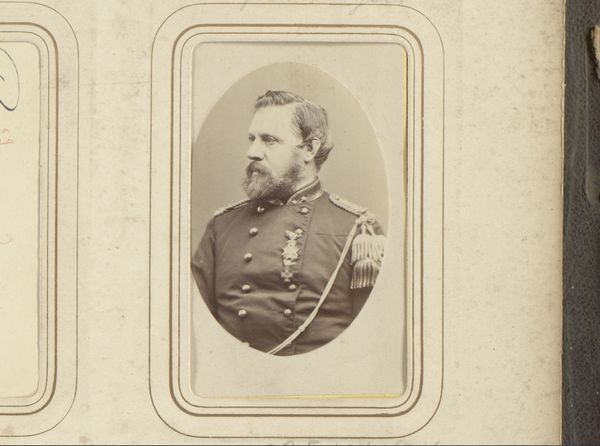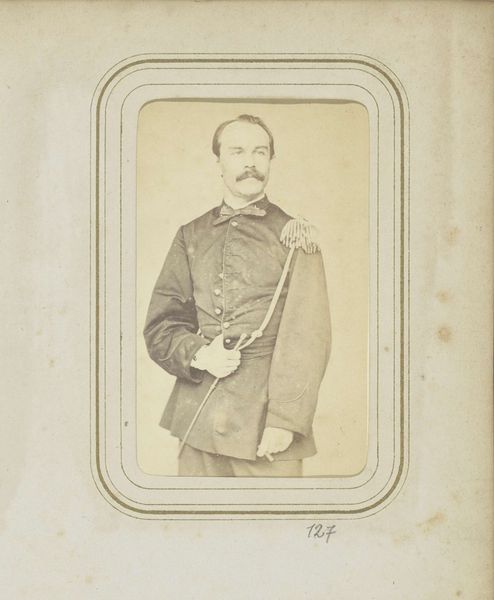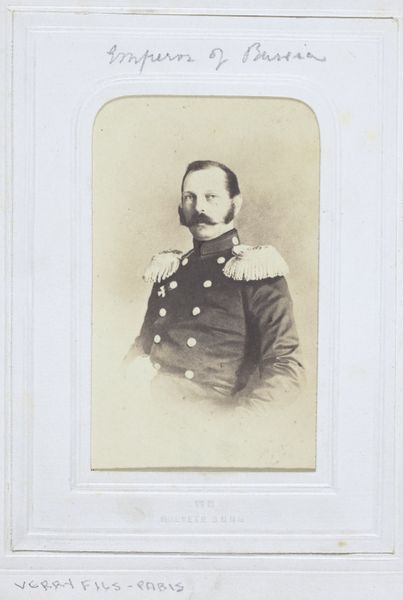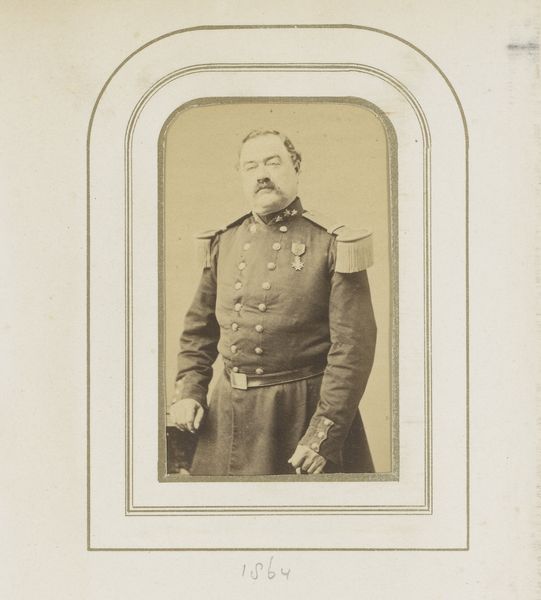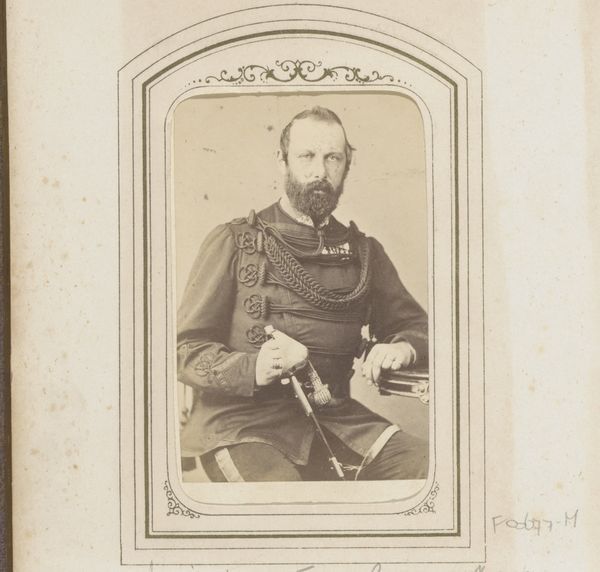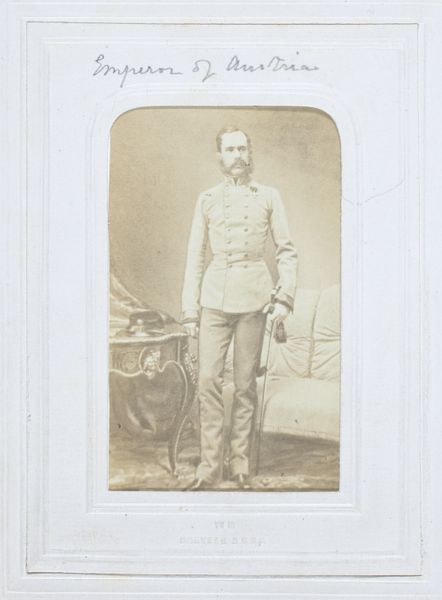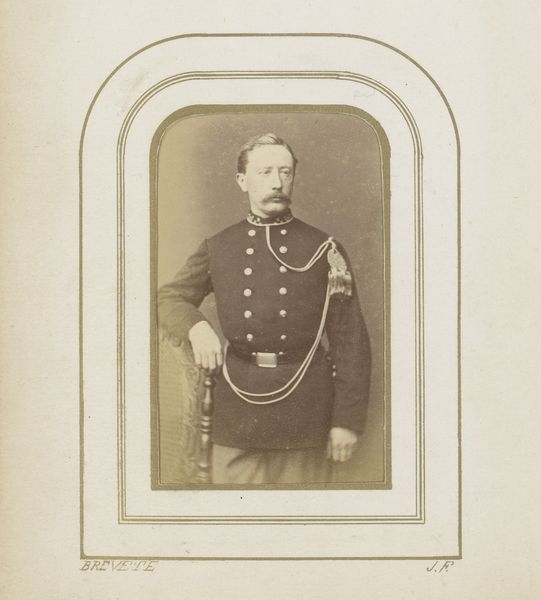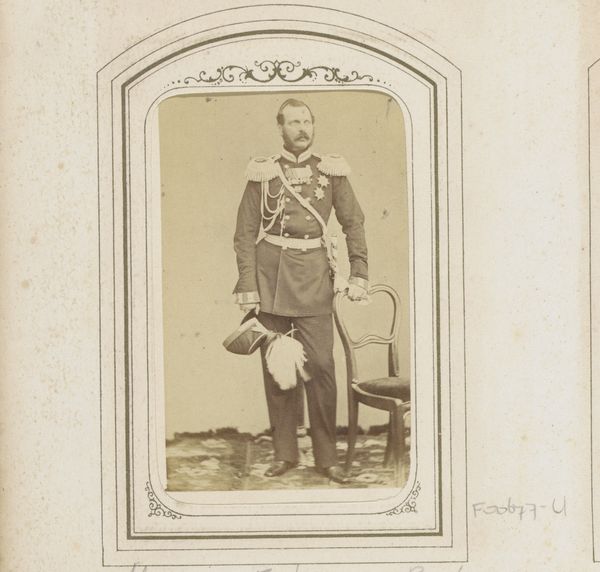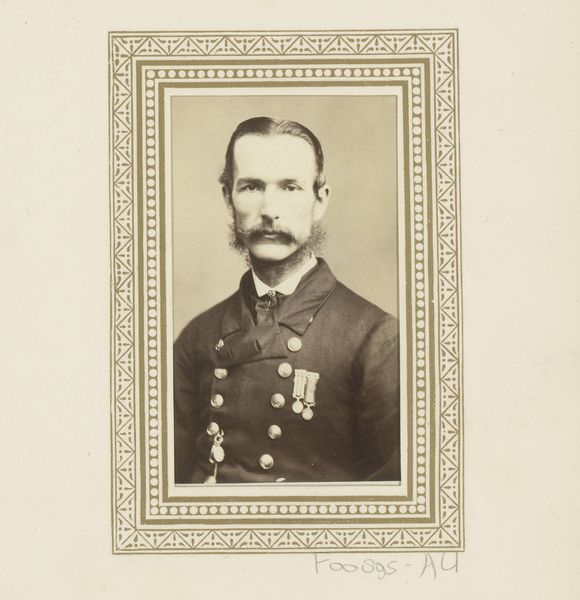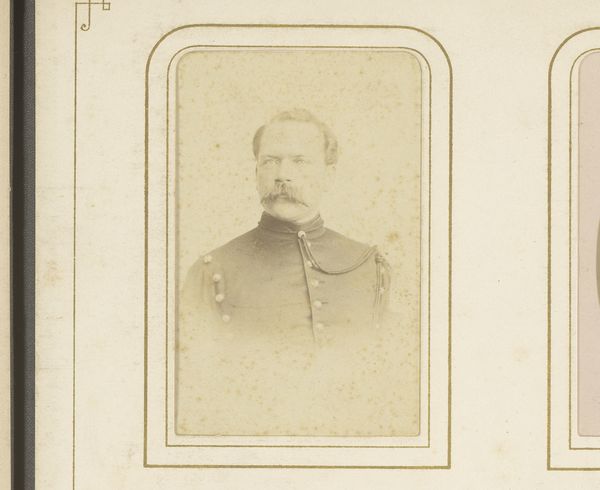
photography
#
portrait
#
photography
#
historical photography
#
19th century
Dimensions: height 85 mm, width 53 mm
Copyright: Rijks Museum: Open Domain
Curator: This somber portrait captures Emperor Franz Joseph I of Austria. The piece, created between 1862 and 1870 by Ludwig Angerer, uses the then-emerging medium of photography to document the Emperor’s likeness. Editor: It's a very stiff image, isn’t it? Almost… constricting. He seems very formal. I find it hard to see the man beneath the uniform, really. It makes me think about the power structures and gender dynamics within royal and military circles. Curator: Well, formality was crucial. Every detail in images of rulers projects symbolic meaning—consider his carefully groomed beard, the cut of his uniform, the medals. Photography was also finding its language, still borrowing conventions of portraiture from painting. It sought to convey authority and status. The trappings of empire are meant to communicate strength. Editor: Right, the image certainly serves as propaganda. The sword, for example, is a patriarchal symbol and points toward colonial exploitation. This is interesting, because photography here, rather than democratizing portraiture, seems instead to reinforce established power structures. But on another note: those thin pants look extremely uncomfortable. Curator: Interesting. I focus more on the enduring cultural symbolism of Habsburg power. Those emblems have specific historical resonance. Each component carries stories, often encoded and layered with cultural meanings specific to his reign. For instance, his neck adornment alludes to military status and implies dynastic virtue and historical pedigree. Editor: The context surrounding that virtue seems highly relevant now, and certainly contested. While images are certainly polysemous, it's hard to see this as just about 'pedigree' and not think about imperial aggression, patriarchy, and a whole legacy of political turmoil. Do symbols still retain potency if we question what they stand for? Curator: That tension is exactly what makes these images compelling—a reflection of continuity and the challenge of change. Visual cues like the cut of his coat, down to the fine line of his mustache—each speaks volumes if one learns to read that language. It presents an echo of empire as cultural memory. Editor: Ultimately, this photo prompts so many questions about inherited power. I keep wondering how performative that regality really was. Curator: A powerful point, and it brings out an additional dimension, perhaps inviting us to explore and scrutinize the layers behind such staged representations of historical importance. Editor: I agree. It also drives the viewer to interrogate the context around the depicted symbols to build meaning.
Comments
No comments
Be the first to comment and join the conversation on the ultimate creative platform.
